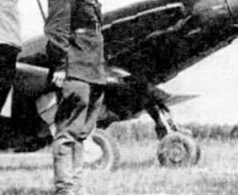
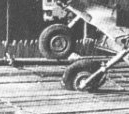
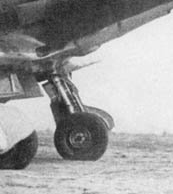
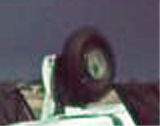
Wheels and Tyres of VVS Aircraft
Part I
Moreover, for those interested in VVS aviation of the GPW era, there is the inevitable expectation of the usual 'exception to every rule all the time' solution. Surely, the same production that gave rise to three differently armed LaGG-3 Series in a single week would have used a plethora of wheels, tyres, and such like depending upon the weather, the day of the week, or if the month had a letter "O" in the spelling....
Not so. Quite remarkably, the Soviet use of aviation wheels
and tyres during the GPW years was so consistent, one is tempted to employ
the rarely heard "s" word ('standard') in regards to these items. Most
VVS fighters built after 1940 utilised the same 650 x 200 mm tyre mounted
on a similar wheel in many programmes, with only minimal changes, and also
used the same tailwheel of 300 x 125 mm size. This kind of consistency
was unusual, to say the least, and it causes one to wonder very much (indeed,
to assume, really) if these wheels were not being delivered by a single
sub-contractor somewhere? Be that as it may (and answer to this question
is unknown currently), this similarity in practice gives us a real chance
to investigate the appearance of VVS wheels of this period.
Mikoyan and Gurevich
The MiG manufacturing programme spanned roughly 13 months, during most of which time the entire project was in considerable disarray. This observation probably explains the large number of tailwheel units that can be seen on various MiG-3 fighters, and the diverse methods for housing these (or not) in the rear fuselage. However, for the main wheels the picture is rather different. These appear to have been the same wheel items in virtually all cases, and moreover show the same tonal appearance on the available photographs where a view of them is possible.
Anecdotally, the claim has always been that the MiG-3 wheels were painted with the trademark Soviet "green" colour (type and nomenclature unknown) which one may see even today on wheels, intake cones and such items [one lacquer described in the 1974 VVS camouflage regulations refers to this paint as 'KO-814 aerolak', but adds in the diagram, "or others..."]. The two surviving and un-rebuilt units we have for examination do seem to show a green paint on this in roughly this category.
In the photographic record this claim does not seem to
be in dispute. When visible, the wheels on MiGs do seem to have a tonal
appearance that would correspond to this hue. We also have available two
colour photographs which show these items, and despite the very dubious
colour registration on such film, they would seem to support a green interpretation,
as well.
 |
 |
 |
 |
Therefore, assuming that that the colour in use was indeed this kind of ubiquitous green hue, the resulting wheel and 650 x 200 mm tyre would look like this.
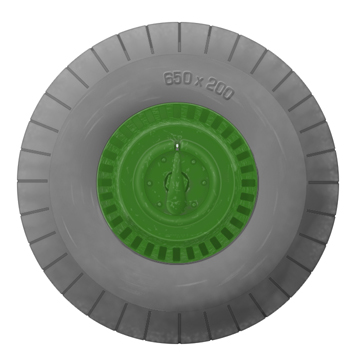
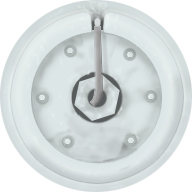
The MiG-3 featured a great number of different tailwheels
types, and as yet there is not really any good information available on
many of these (look for later editions of this article). However, one unit
which does appear regularly and for which useful photographs exist is this
wheel. The tyre size is unknown, and in fact this might be a solid hard
rubber item, just judging by its appearance.
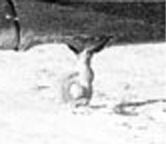 |
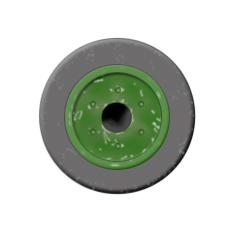 |
The Lavochkin OKB
Wheel use and painting in the various Lavochkin products
seems to have been split into two phases, with the early period showing
older and less standard behaviour, and the later pattern demonstrating
considerable uniformity. Up to the end of 1942-- that is to say, the main
portion of the LaGG programme and the early days of the La-5-- the appearance
of these wheels are varied. They all seem to be the same unit mounting
the usual tyre (as seen on the MiG and elsewhere), but the tonal properties
of these on the available photos are mixed. Some units show a darker colour
which might be in agreement with the 'Soviet green' idea, while others
feature a lighter shade similar to, or lighter than, the undersurface colouration.
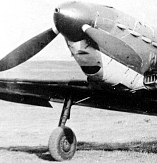 |
 |
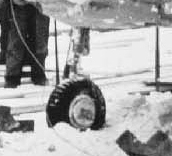 |
The photo to left shows a 1942 vintage LaGG at Tblisi, and the wheels have the same appearance as many MiG wheels. The central image shows lighter tone. The picture rightmost shows the lighter tone, but also a cover which is observable on some early Lavochkin fighter wheels. The unit appears to be the same as elsewhere, but with a circular cover over the central hub area.
Based on these observations, we might speculate that the LaGG could feature wheels painted with the green colour, or in other cases not painted at all (bare steel), or with the undersurface colour in use (AII Blue or AMT-7).
On the later Lavochkin fighters such as the La-5FN and La-7, the wheel appearance is uniformly light in tone. The impression one gets here is for an unpainted wheel, or one finished with the undersurface lacquer.
We do have available several surviving La-7 wheels of
which one can be fairly certain regarding their authenticity. Of these
7-8, six of them look to have been delivered originally in an unpainted
condition (the steel surface demonstrates corrosion and oxidation under
the current layers of various non-aviation lacquer). One (and arguably
two) unit shows what is thought to be AMT-7 Blue sitting directly on top
of the steel surfaces, i.e. showing no priming. This lack of primer usage
is fascinating if one takes into account the very great... erm.... shall
we say, "enthusiasm" of the Soviet factories for using ALG-1 Primer on
such items. Is this evidence that the wheel units were supplied by a sub-contractor?
Be that as it may, here are some related photos.
 |
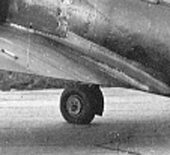 |
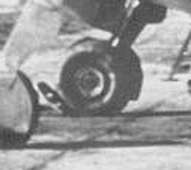 |
The photo to the left is from an La-5F in 1943; next from an La-5FN in 1944; lastly an La-7 from the same year.
Taking these observations into consideration, here are the likely appearances of the various Lavochkin programmes' wheels.

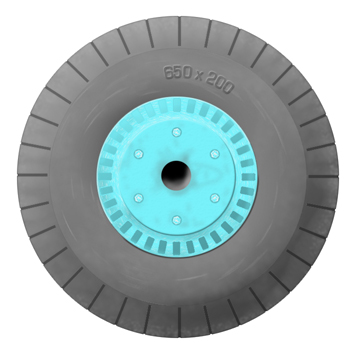
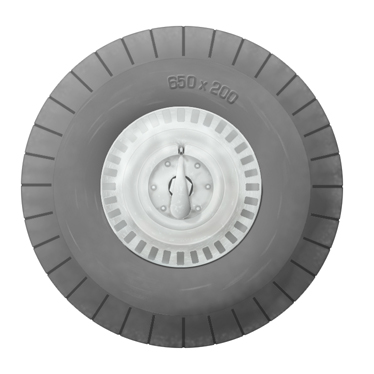
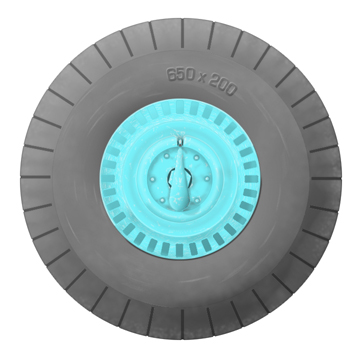
In the matter of Lavochkin tail wheels, happily there
seems to be a standard (good heavens!). A wheel identical to that on the
Monino La-7 exhibit can be seen in various photographs of both LaGGs and
La-5/-7s. It looks to mount the typical 300 x 125 mm tyre, as used on most
VVS fighter tailwheel units. The appearance seems to be uniformly light
in tone, suggesting either unpainted surfaces or the undersurface lacquer.
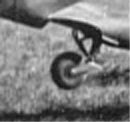
LaGG-3 |
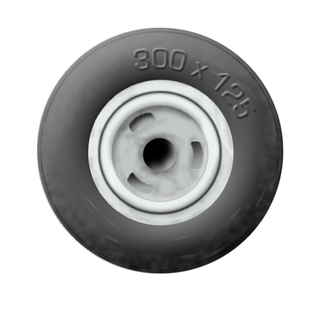 |

La-7 |
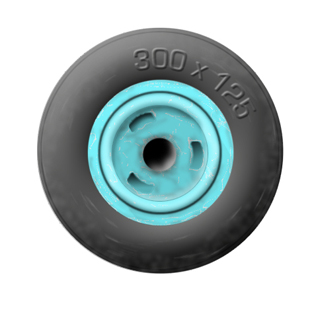 |
New Findings
As a final word, let us be certain that exceptions to
these general observations are going to be found. We are only just embarking
upon a detailed examination of these units, and this material cannot possibly
be regarded as definitive. As new information and photographs become available,
new and updated portions of this article will appear.
Next: The Yakovlev OKB....